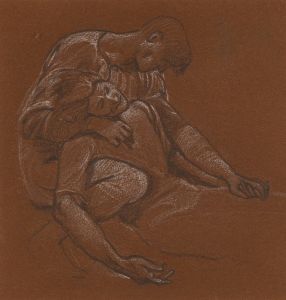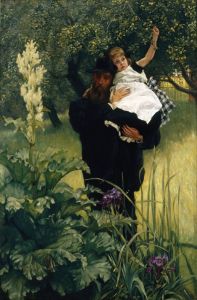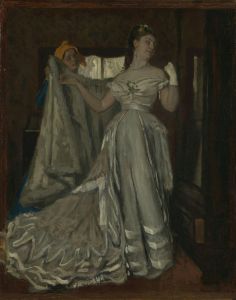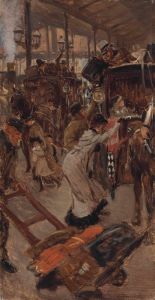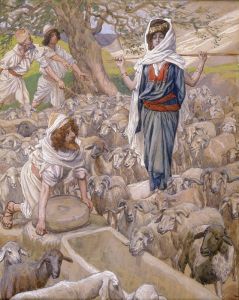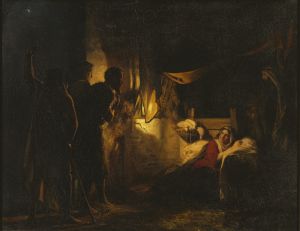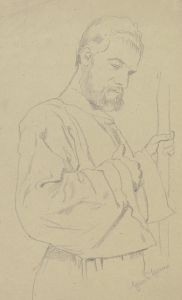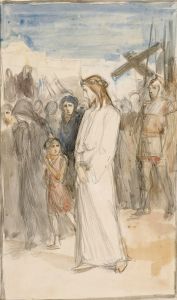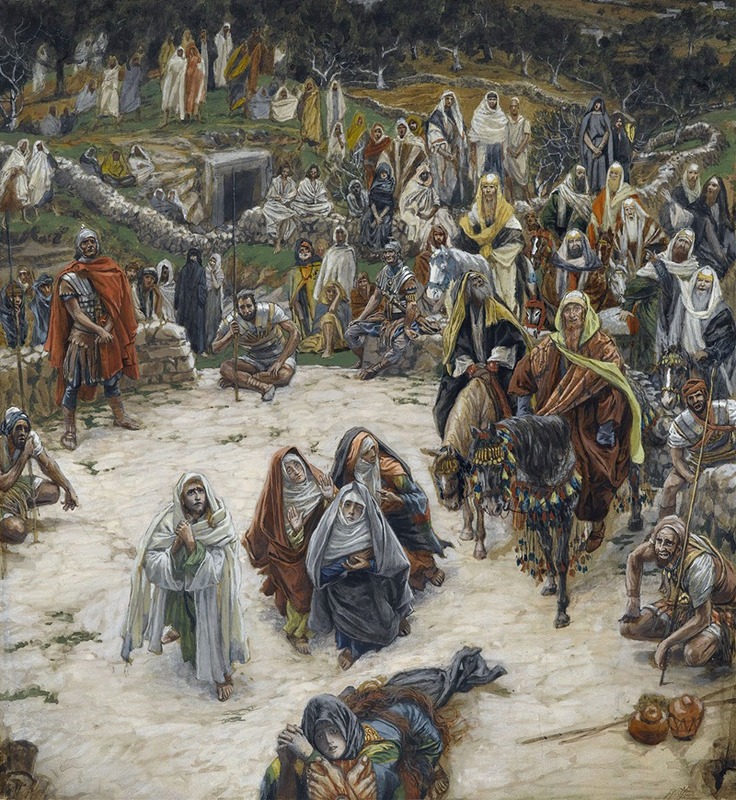
What Our Lord Saw from the Cross
A hand-painted replica of James Tissot’s masterpiece What Our Lord Saw from the Cross, meticulously crafted by professional artists to capture the true essence of the original. Each piece is created with museum-quality canvas and rare mineral pigments, carefully painted by experienced artists with delicate brushstrokes and rich, layered colors to perfectly recreate the texture of the original artwork. Unlike machine-printed reproductions, this hand-painted version brings the painting to life, infused with the artist’s emotions and skill in every stroke. Whether for personal collection or home decoration, it instantly elevates the artistic atmosphere of any space.
"What Our Lord Saw from the Cross" is a painting by the French artist James Tissot, created in the late 19th century. Tissot, born Jacques Joseph Tissot on October 15, 1836, in Nantes, France, was known for his detailed and realistic style, which he applied to both secular and religious subjects. After achieving success in Paris and London with his society portraits and genre scenes, Tissot experienced a profound religious conversion in the 1880s, which led him to focus on biblical themes.
The painting "What Our Lord Saw from the Cross" is part of Tissot's ambitious project to illustrate the life of Christ, which culminated in a series of 350 watercolors known as "The Life of Our Lord Jesus Christ." This series was the result of Tissot's extensive travels to the Holy Land, where he sought to capture the historical and geographical accuracy of the biblical narratives.
"What Our Lord Saw from the Cross" is a unique and striking work because it presents the Crucifixion from an unusual perspective. Instead of depicting Christ on the cross as seen from the ground, Tissot chose to illustrate the scene from the viewpoint of Jesus himself. This perspective allows viewers to see what Christ might have seen during his final moments, looking down from the cross.
The painting shows a panoramic view of the crowd gathered at Golgotha, the site of the Crucifixion. The composition includes various figures, such as Roman soldiers, onlookers, and the grieving followers of Jesus, including the Virgin Mary and Mary Magdalene. The detailed rendering of the figures and their expressions conveys a range of emotions, from indifference and curiosity to sorrow and despair.
Tissot's meticulous attention to detail is evident in the clothing, architecture, and landscape, which reflect his efforts to accurately represent the historical and cultural context of the time. The use of light and shadow in the painting enhances the dramatic effect, emphasizing the gravity of the moment.
The painting is part of the collection at the Brooklyn Museum in New York, which acquired Tissot's series of watercolors in 1900. The museum has since been a significant repository of Tissot's religious works, providing insight into his later career and his dedication to depicting biblical events with authenticity and reverence.
James Tissot's "What Our Lord Saw from the Cross" stands out not only for its unique perspective but also for its combination of artistic skill and historical research. It remains a powerful and evocative representation of the Crucifixion, inviting viewers to contemplate the scene from a deeply personal and immersive viewpoint.






